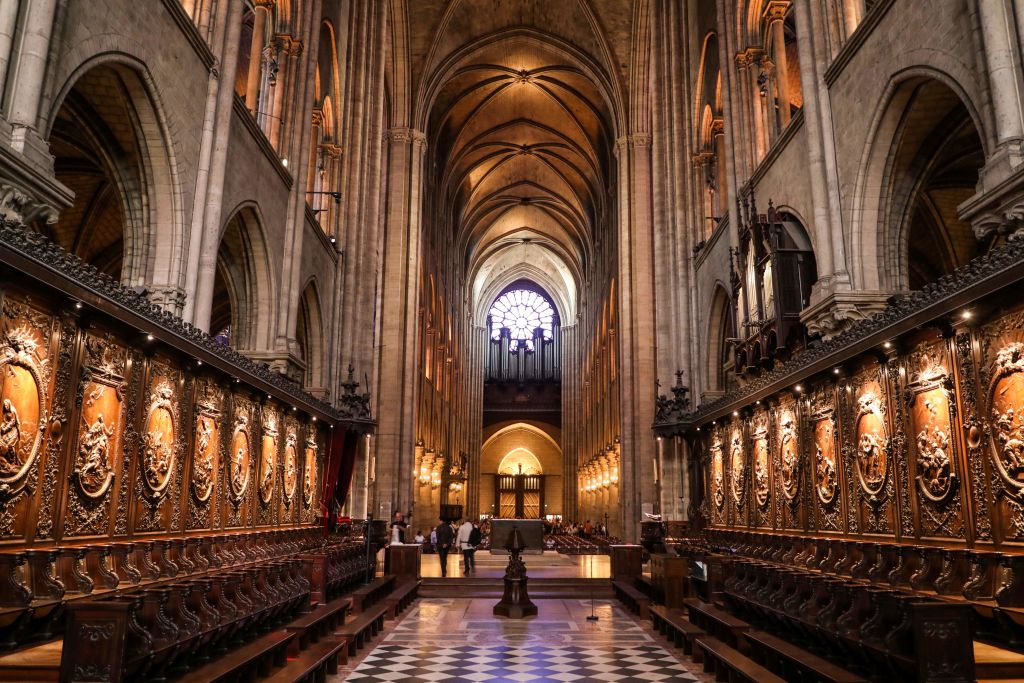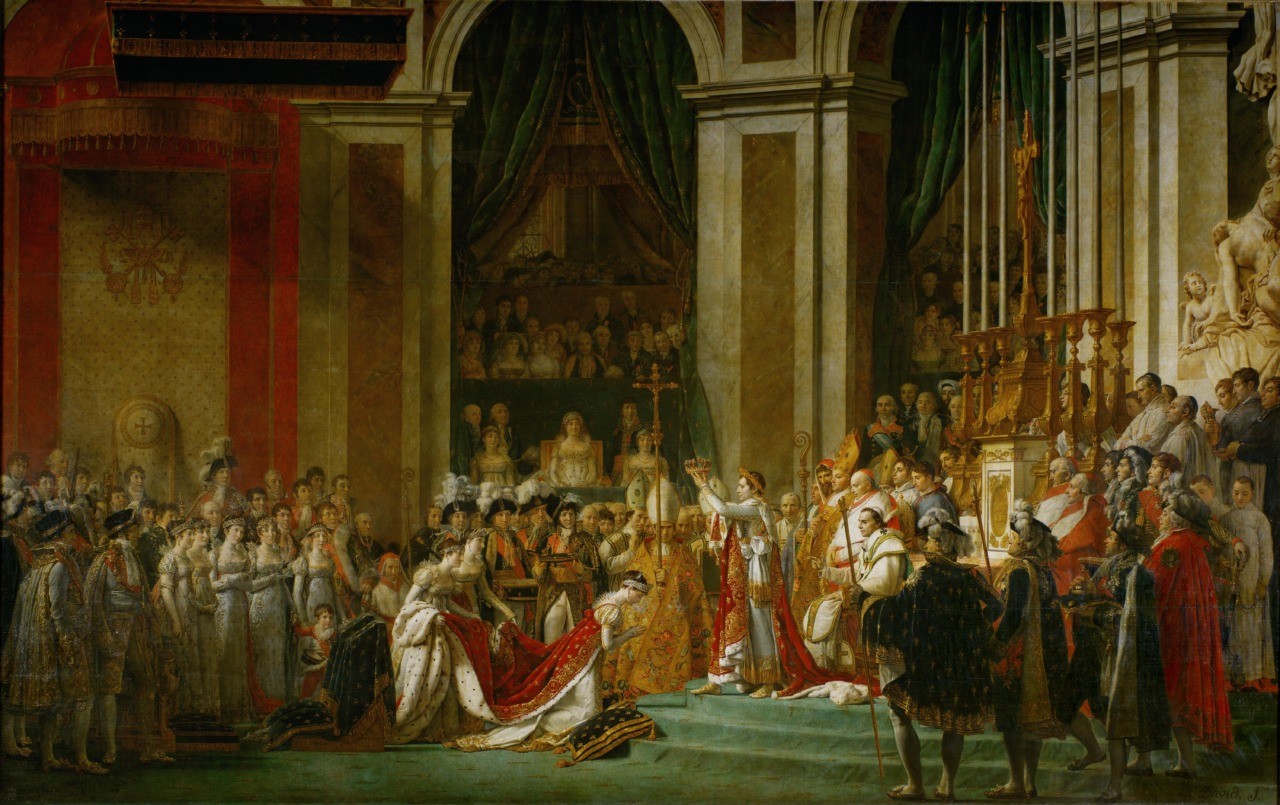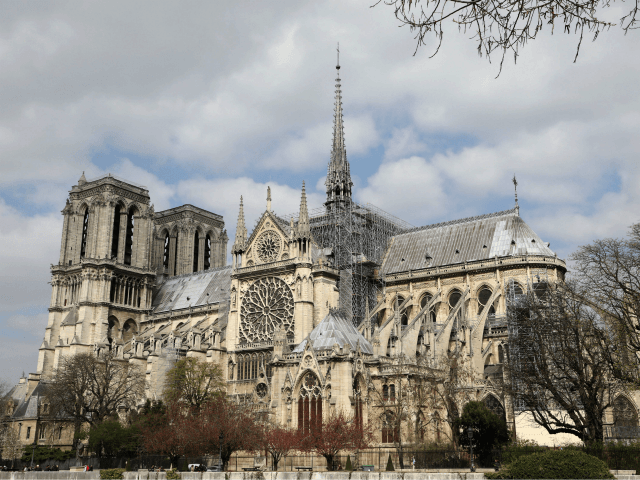Long before the Eiffel Tower shot up from the Parisian skyline or the Sacré Coeur basilica stood vigilant atop Montmartre, the Cathedral of Notre Dame embodied all that was good and true in Paris.
Begun in 1163 when Pope Alexander III laid its foundation stone and largely completed by 1250, Notre Dame preceded the Arc de Triomphe, the Champs-Élysées, and the Tuileries garden. In many ways it represented the soul of France, proud of its status as “eldest daughter of the Church.”
A masterpiece of Gothic architecture, the cathedral is located on the Île de la Cité in Paris, and attracts over 14 million visitors each year, far more than the Louvre Museum, the Château de Versailles, and Montmartre.

This photograph taken on June 26, 2018, shows the transcept of Notre Dame de Paris Cathedral in Paris. (Photo by Ludovic MARIN / AFP)
A massive fire burned through Notre Dame’s oak roof Monday, causing the cathedral spire to collapse, though much of the stone interior of the church, including the ceiling vaults, remains largely intact.
The cause of Monday’s fire is still unknown, with speculation ranging from a mishap related to ongoing restoration work on the roof, to arson. A series of recent acts of arson and vandalism against Catholic churches — including a fire started in the Paris church of Saint Sulpice last month — have been highlighted in the wake of the Notre-Dame fire.
Many of the cathedral’s treasures were salvaged, including its most precious relic, the Crown of Thorns believed to have been worn by Jesus during his passion. A priest named Father Fournier, the chaplain of the Paris firefighters, rushed into the burning cathedral Monday and was able to save the crown, aided by a human chain.
Another important work believed to still be intact is Nicolas Coustou’s Pietà, a marble statue behind the cathedral’s high altar, also known as the Descent from the Cross.

Coronation of Emperor Napoleon I and Coronation of the Empress Josephine in Notre-Dame de Paris, December 2, 1804, by Jacques-Louis David (Wikimedia Commons)
Notre Dame is no stranger to destruction. It was attacked by rioting Huguenots in 1548, who demolished a number of statues on the grounds they were idolatrous.
During the French Revolution, the cathedral was sacked and vandalized by anti-Christian Republican forces, who gutted its interior, shattered its stained glass, and smashed and beheaded its statues. The desacralized church was used as a storage warehouse until it was eventually converted into a temple to the cult of Reason on November 10, 1793.
Along with its history of destruction, however, Notre Dame also has a history of restoration, or, as some might say, resurrection. The spire that collapsed Monday was actually a later modification to the church, fruit of a major restoration project supervised by Eugène Viollet-le-Duc between 1844 and 1864.
During the 19th century, hundreds of oak trees were reportedly planted at Versailles in the event that Notre Dame ever needed to be restored again and its oak roof replaced.

Paris, FRANCE: The archbishop of Paris Andre Vingt-Trois (R) holds a special mass for the ailing John Paul II Pope, 01 April 2005 at Notre Dame cathedral in Paris. The Pope received the last rites 31 March 2005 after suffering a heart attack. Pope John Paul II is “ready” to die, one of the leaders of the Polish community in Rome, Father Konrad Hejmo, told reporters 01 April 2005. AFP PHOTO JOEL SAGET
Two French billionaires have already come forward to pledge funding for the restoration of Notre Dame. François-Henri Pinault, the husband of Salma Hayek, pledged 100 million euros and not long after, LVMH owner Bernard Arnault and his family pledged another 200 million euros for the renovation of “this extraordinary cathedral, which is a symbol of France, of its heritage and of French unity.”
Barbara Drake Boehm, senior curator at New York’s Metropolitan Museum of Art’s medieval Cloisters branch, underscored the iconic status of the Parisian church for the patrimony of mankind.
“It’s the very soul of Paris, but it’s not just for French people. For all humanity, it’s one of the great monuments to the best of civilization,” she said.
Follow Thomas D. Williams on Twitter Follow @tdwilliamsrome

COMMENTS
Please let us know if you're having issues with commenting.